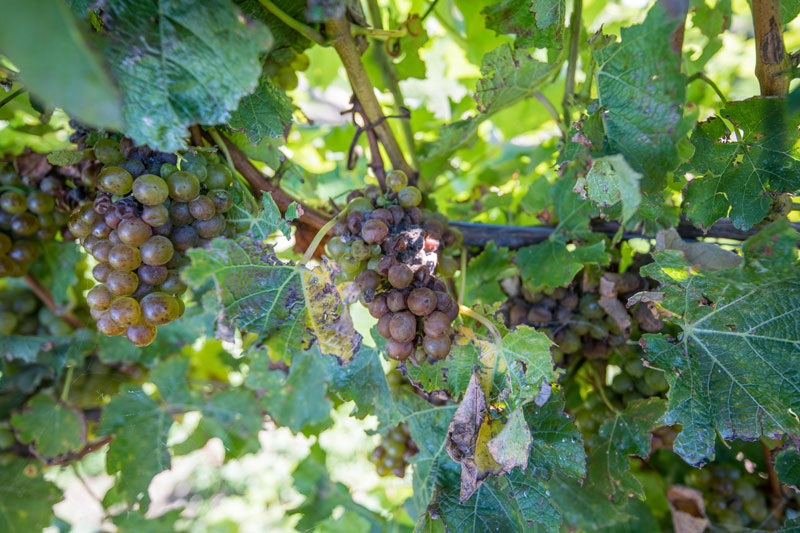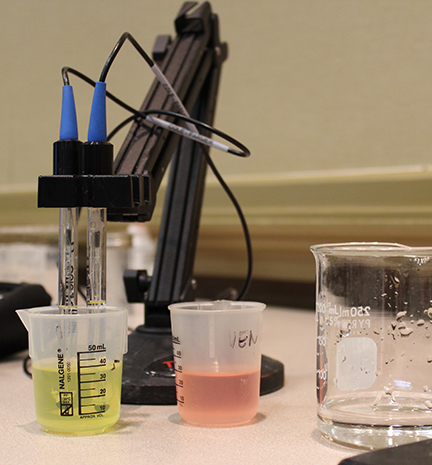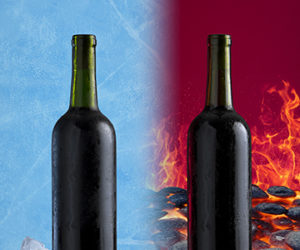
When winemakers talk about volatile acidity (VA), the acid that springs to the top of our collective minds is acetic acid. We all know it as vinegar, and we all know it’s volatile, in other words, we smell it well before we taste. But that is not the only acid found in wine that will cause VA. And while VA is generally considered a fault when it is apparent, it can actually lift a wine’s body and character when kept at low levels. So today we’ll try to delve into its roots and ways to control it in your wine.
As stated in the last paragraph, there is more to VA than just acetic acid. Ethyl acetate is a much more potent spoiler of wine compared to vinegar. While it is not actually an acid, its presence is indicative of acetic acid as it is commonly produced by acetic acid bacteria and smells like nail polish remover. Other true acids that contribute to measured VA include compounds like carbonic, sulfurous, butyric, lactic, and propionic acids. But in a typical wine, acetic acid makes up over 90% of VA compounds.
Volatile Acidity Causes
For the most part, this can be summed up with one word . . . oxygen. Too much oxygen in your wine and the bacterial strain Acetobacter will start to turn your alcohol into acetic acid. Minimize this interaction and you are a lot less likely to see VA pop up in your wine. Common events that can create VA are as follows: Poor fruit quality, cold soaking or extended macerations, natural fermentations, stuck fermentations, improper sulfiting of wine (especially just prior to bottling), barrel aging and/or not topping up your aging vessels. You may be able to recover when one or two of these events occur, but as more get checked off the more likely you are to see VA issues arise.
We need to make one thing clear: VA is part of all wine. Whether you want a little or not, there is no way to completely eliminate its presence. It’s a natural by-product of a healthy fermentation, but in very low concentrations.
The key is that winemakers can take steps to minimize it. For grape winemakers, the first step in controlling its presence is to minimize damaged fruit. If a winemaker starts with a high percentage of grapes that have seen a high level of pest or disease stress, then that winemaker is probably starting with high levels of VA already in the grapes. So be sure to cull out, as best you can, poor looking grapes; but don’t feel like you need to go overboard. And if, overall, your grapes don’t seem in great condition, add more sulfite to them pre-fermentation. 50 ppm sulfite will help suppress microbial spoilage critters early in fermentation. For more on this concept, check out: https://winemakermag.com/article/cherry-picking-grapes
Volatile Acidity Mitigation
Next, it’s all about following sound winemaking practices. If you are planning on either a cold-soak or extended maceration period, then regularly layering the must with inert gas is needed to prevent oxygen ingression. Inoculating your must with a commercial strain of yeast will also minimize the risks associated with VA. That said, some winemakers may actually allow an abbreviated period prior to inoculation to allow the native yeast to work their magic since, as noted earlier, a small amount of VA can be a wine enhancer.
During active fermentation your wine is protected from oxygen and, in fact, benefits from some oxygen. But as fermentation slows down, that once again swings the other direction and oxygen can again become your enemy. After fermentation is complete (as well as malolactic fermentation), then winemakers’ knight in shining armor is sulfite salts, either potassium metabisulfite (KMBS) or sodium metabisulfite (SMS, or commonly sold as Campden tablets). Sulfite salts will release a little sulfur dioxide that can scavenge any oxygen in the wine. How much sulfur salts to add is highly dependent upon several factors and is best done with a sulfite calculator like the one found at: https://winemakermag.com/guide/sulfite
A final note about sulfite is that these additions should be done on a regular basis in order to maintain a steady and safe level of the oxygen-scavenging sulfur. And the addition of sulfite salts just prior to bottling is the most important addition of all. This will allow the wines to age properly.
Making sure your wine fermenter or barrel is properly topped up during its aging period is a key step in managing VA. Despite what some winemakers may think, oxygen does diffuse past silicone bungs. This means that the best way to mitigate the inevitable exposure to oxygen is to reduce the wine-to-air surface area. This is true in carboys, demijohns, and barrels. Bring the wine all the way up the neck of the carboy to its thinnest point. Barrels need to be regularly topped up since water and alcohol will vaporize from the barrel. Aging wine should be checked about once a month to make sure it’s properly topped up. If the liquid is more than an inch (2.5 cm) below the barrel’s bunghole, it should be topped up. For more on topping up, check out: https://winemakermag.com/article/topping-up-your-wine
Treatments For Volatile Acidity
As already alluded to, the best treatment for VA is prevention. But if it is caught early, then it can be minimized. Racking a wine out of its current vessel and into a fully topped up container, then hitting it with KMBS is one way to minimize its growth. Once it’s apparent but controlled, blending with a much cleaner wine is good, but only for wine with a subtle case of VA.







